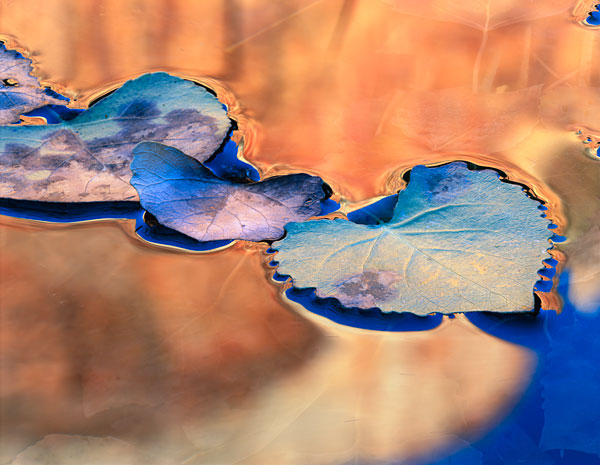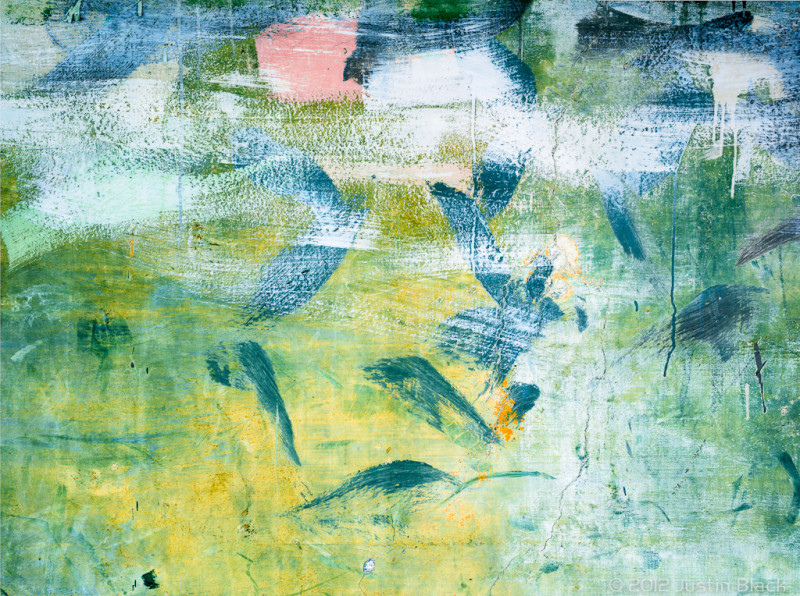We’ve all been there – going out with the camera looking for photographs without much idea of how to seize the opportunity to do something new. The desire to photograph is there, but creativity seems to be on vacation. The fact is that creative inspiration can be hard to find and even harder to sustain. Like a rogue wave, it can flood us unexpectedly in a powerful surge, only to quickly ebb, leaving us adrift in a minus tide of creative block. The quest for a personal creative vision can be complicated further by the common practice of learning through emulation of other photographers’ work. Though this practice can be enlightening and competence-building, it becomes a double-edged sword if the mind’s eye is overpopulated with other people’s pictures, serving as mere templates for remaking that which has already been done.
In terms of nature photography, I think of creativity as the visionary ability to make new images happen – to envision them, discover how to find the relevant circumstances coinciding in the world, and then apply skills and experience to execute the picture. It might seem counterintuitive to presume that we can impose our creative will on the dynamic natural world in this way, but natural laws and cycles provide the greatest tool at our command: anticipation of opportunity.
The visionary creative part of the process arises from the interplay of our thoughts, passions, emotions, desires, and external influences drawn from all aspects of life experience and learning. It is motivated by the drive to bring into the world a picture that we feel is missing – an image dealing with new conceptual and aesthetic ideas, personal passions and insights or a reinterpretation of old notions that have a fresh relevance today.
Learning to conjure mind’s-eye images to inspire and drive the creation of compelling original photographs will lead to greater purpose and satisfaction, and to photographs that reflect authentic and sincere personal expression. To achieve this goal requires a healthy creative engine and the openness, awareness, knowledge and experience to envision a range of possible images, along with some impossible ones too. While the Yeti is more common than the photographer whose creative engine fires on all cylinders at all times, creativity can be nurtured to keep the engine fueled and primed.
One of the many wonderful things about nature photography is that there are an infinite number of pictures as yet undone and as many potential creative journeys. Every step of your personal journey feeds into the creation of your photographs, even if the path includes missteps and apparent failures. Embarking on the journey is the important thing. It’s been said that creativity involves allowing one’s self to make mistakes, while the art is in knowing which ones to keep. It’s not helpful to hang on to regrets about periods of inactivity or creative directions that led to dead ends. Every life experience, every emotion, every new perspective has the potential to spawn creativity.
Ways to Inspire Creativity:
– Imagine convergence and juxtaposition: Put together visual scenarios in your mind, imagining what would be necessary for each component (and you with your camera) to be present and positioned appropriately in relation to one another. Examples of factors to consider: Weather, season, position and motion of heavenly bodies, tides, elevation, latitude, wildlife behavior, physics of light and optical phenomena, and access and environmental issues.
– Practice visual “scales”: Use your eyes to investigate the world around you in a detailed way, including things that seem at first very familiar and mundane. Get up close to nature. You can do this anytime, even walking through a city park on the way to work, but try to find some peaceful time to go slow. You might add a piece of heavy card stock with a window cut in it (or a commercially available Visualizer card), to practice finding compositions without a camera. Then, close your eyes and spend some time touching, smelling, and listening to nature to spark your visual imagination.
– Stream of consciousness: Take a voice recorder or notepad with you on your outings and record your thoughts and emotional responses to the place without worrying too much about grammar or linking words and phrases together – the way the wind moves through the trees, the sound of birds or frogs, the quality of light and atmosphere. Expressing verbally the characteristics that inspire us about a subject can suggest a creative approach to photographing it. This method even works in reference to memories of places we care about, particularly from childhood.
– Experiment: Spend a day photographing exclusively from ground level. Run through a field of flowers and shoot slow-shutter-speed exposures with the camera held just above the blossoms. Imagine a boundary around a space small enough that you can explore it in some detail, and make a project of photographing only compositions that you can find within that space. Make a series of multiple-exposure or super-long exposure images. Set aside technical orthodoxy and spend some time shooting free and loose. Focus on the narrow idea you’re experimenting with, rather than perfect histograms and optimal f-stops.
– Personal projects force you into creative problem solving: My friend Jeff Foott has experienced a creative explosion through a project built around his passionate response to the destruction of western forests by invasive pine bark beetles. His creativity is fueled by his love of wilderness, the commitment to tell a story through his images, and the response to new ideas and objective challenges that he encounters in the process.
– Read a book: Read up on the natural sciences. Geology, ecology, biology, meteorology, climatology, astronomy, the physics of light and optics, have important practical applications for nature photographers, but they also serve to inspire imagery in the mind’s eye and expand awareness of photographic opportunities. Beyond that, virtually all types of literature can expand the imagination and broaden perspectives and experience of the world. A good start is to read a highly regarded book from a genre that you’ve never read before.
– Seek inspiration from cultural influences: Think about history, current events, the arts, the sciences, and other cultural sources that inspire you. Perhaps you’re deeply moved by the story of the Lewis and Clark Expedition. Can you call upon that passion to inspire your photography? Are there artworks in another genre that move you to create through the camera? One photographer might be initially inspired by a love of dance to photograph birds in courtship displays. Another might embrace the magical realism of Gabriel Garcia Marquez novels and use the imagery conjured by the author’s words to develop a photographic theme.
– Harness your outrage: Anger can be turned into a positive creative force. Perhaps a proposal to strip mine a scenic mountaintop in your state or to permit hunting of a species recently delisted from Endangered Species Act protection gets the creative juices flowing.
– Diversify your experiences: Do something new and different every day, or at least every week, with or without a camera. Even apparently mundane activities can change your thinking and perspective, so long as they are outside your normal routine. A broad range of experiences encourages creative thought in general.
– Expand your identity: Identify harmless behaviors and activities that you rarely or never engage in and GO FOR IT! If you never dance, sing, stargaze, act in community theater, rock climb, or volunteer for a charity, pick something that is typically outside your comfort zone and try it. Remember, diversity of experience and perspective provides the foundation for creative thought.
– Let yourself play: Is the free-spirited dreamer in you squashed by the rational pragmatist? Do you tend to need order and structure to be comfortable? In creative photography we can afford to let frivolity, dreams, and play come to the surface. The way needs to be cleared for spontaneity, serendipity, and impulse.
– Keep a creativity journal: Note down creative ideas as they emerge. Even if an idea seems impractical, silly, or unrelated to anything you might actually photograph, ideas stimulate other ideas. Whether an idea comes from within you or an external source, it could serve as useful inspiration in the future.
Of course, you’ll have to identify the methods that work best for you. Give thought to the circumstances that contributed to the most creative episodes in your past. Did the group energy and shared individual perspectives of a photo workshop inspire you, or was it the solitude of a wilderness backpack trip that most liberated your creative thought and vision? Were you deliberately trying to be creative, or did you find yourself in a mental state from which creativity flowed effortlessly? Do you tend to have more success when your time is tightly scheduled, or does creativity come only when you have unstructured time to calm your mind? Did you have pre-defined ideas in mind, or were you relying on serendipity to lead you to the photograph?
Creative blocks are an inevitable part of the journey too, but understanding the factors at play helps move around them. Blocks can occur when the reasoning mind is too dominant over the senses and intuition, or they can result from focusing too much within ourselves and our own limited experiences, whereas seeking new experiences and external perspectives typically has a stimulating effect. Rather than trying to work through the block, try focusing attention in another area and on other activities – maybe even another creative exercise that has nothing to do with your photography.Just as you analyzed your more creative phases, give thought to periods when you felt creatively hopeless. Did you feel under pressure to accomplish too much during a weekend trip to a place you’d never visited before? Were you distracted by thoughts of the office? Were you focusing mostly on technical considerations rather than your emotional response or the aesthetic and conceptual? Each individual’s creativity is influenced by a unique assortment of factors, so understanding the circumstances in which you have personally thrived or struggled leads to greater control of how you choose to create in the future.
Developing visionary creativity empowers us to move beyond passive seeing and clichés, puts us in the driver’s seat, and ultimately makes our photography more personally expressive and meaningful. Even the best photographers have off days, but we can take charge and open the doors to enhanced creativity over the long term, and that is ultimately what moves our art forward.

